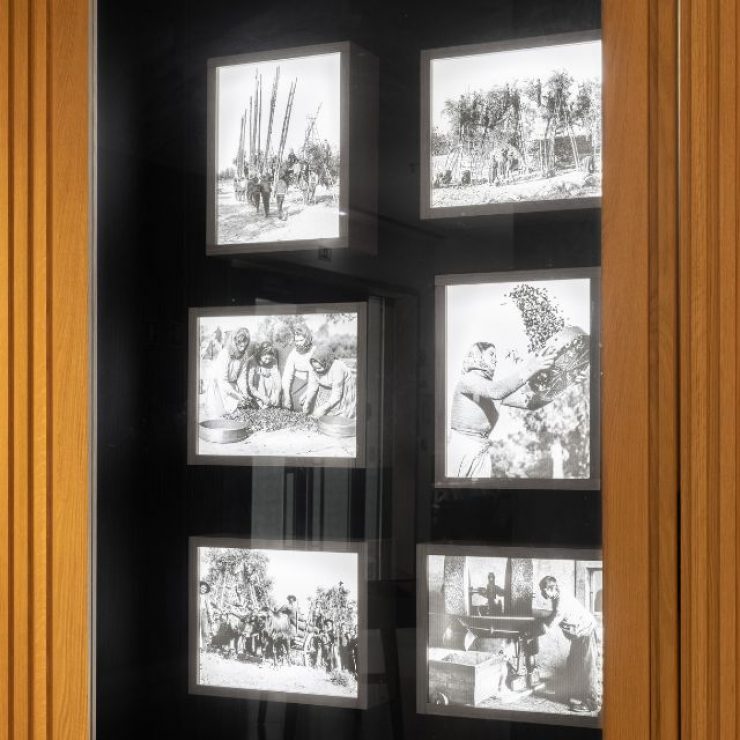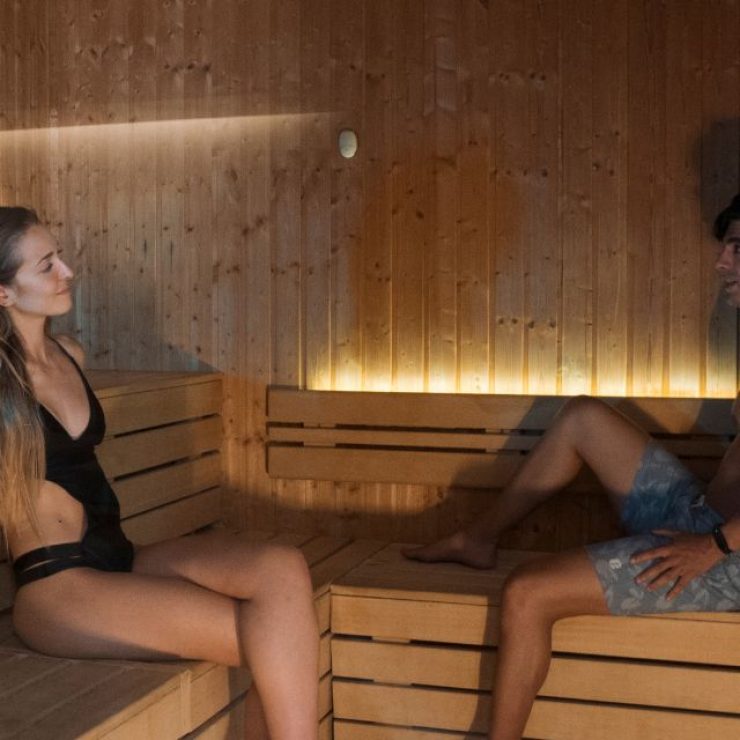The Olive Tree Patio or “Olive Grove” of Évora Olive Hotel showcases a few species of olive trees found in Portugal and in the Alentejo.
It has seven different varieties of Olive trees, for a total of fourteen trees.
GALEGA VULGAR – OLEA EUROPAEA EUROPAEA L. VAR. EUROPAEA
Scientific Name: Olea europaea europaea L.
Cultivar: GALEGA VULGAR
Origin: Portugal (initially, during the reign of the Catholic Monarchs of Spain, Ferdinand and Isabella (16th century), it probably came in from the Spanish region of Galicia.)
Other designations: Galega, Galega Miuda, Molar, Molarinha, Negroa, Negrucha
Dissemination: Ribatejo, Alentejo, Beira Interior, the Algarve and Spain (Huelva and Extremadura).
Uses: Olive oil and cured as black olives.
Main characteristics: Cultivar of great size and rusticity, vertical branches, very productive and of great alternation. Entry into early production. Low pulp/stone ratio. High resistance of the fruit to detachment, not suitable for mechanical harvesting by vibration, with a sharp fall of the fruits at the end of maturation process. Low vegetative propagation capacity with semi-hardwood cuttings. Quite vulnerable to gloeosporium olivarum, to the olive fruit fly, tuberculosis, cochineals and sooty mold and resistant to the Verticillium and the olive peacock spot. Tolerant to draught, sensitive to the cold, high salinity and active limestone. Low yield in olive oil (<18%) and poor in linoleic acid. Smooth olive oil with marked notes of green olive leaves and apples.
Cultivar included in the following Protected Designations of Origin: “Azeites de Beira Alta”, “Azeites da Beira Baixa”, “Azeites do Ribatejo”, “Azeites do Alentejo Interior” ,“Azeites de Moura” and “Azeites do Norte Alentejano”.
MAÇANILHA DE TAVIRA – OLEA EUROPAEA EUROPAEA L. VAR. EUROPAEA
Scientific Name: Olea europaea europaea L.
Cultivar: MAÇANILHA DE TAVIRA
Origin: Portugal and Spain
Other designations: Maçanilha de Tavira, Maçanilha Algarvia.
Dissemination: The Algarve and the Alentejo.
Uses: Cured as green or mixed olives and olive oil.
Main characteristics: Cultivar with a high size and growth, medium arborescence, horizontal branches, moderately productive and alternating. Entry into early production. Medium pulp/stone ratio. The separation of the pulp from the stone is difficult. Low vegetative propagation capacity with semi-hardwood cuttings. (<20%). Low fruit resistance to detachment which facilitates mechanical harvesting. Tolerant to the cold, drought and high salinity. Average incidence of tuberculosis and gloeosporium olivarum and high of olive peacock spot. Susceptible to olive fruit fly, moths and cochineals.
Medium yield in olive oil (18-22%) of very good quality. Intense green olive oil with marked notes of green olive leaf, fresh grass and green banana peel.
GALEGA GRADA DE SERPA – OLEA EUROPAEA EUROPAEA L. VAR. EUROPAEA
Scientific Name: Olea europaea europaea L.
Cultivar: GALEGA GRADA DE SERPA
Origin: Portugal
Other designations: Galega Grada de Borba, Galega Grada, Galega Grossa Redonda.
Dissemination: The Algarve and the Alentejo.
Uses: Cured as black olives (artisanal) and also olive oil.
Main characteristics: Cultivar with a high size and growth, medium arborescence, vertical branches, of great rusticity and good crops. High pulp/stone ratio. Low fruit resistance to detachment and sharp fall of the fruit during maturation. Medium vegetative propagation capacity with semi-hardwood cuttings. (20-60%). Very tolerant to the cold. Average incidence of cochineals and sooty mold and low incidence to tuberculosis and olive fruit fly. Medium yield in olive oil (18-22%) of reasonable quality.
REDONDIL – OLEA EUROPAEA EUROPAEA L. VAR. EUROPAEA
Scientific name: Olea europaea europaea L.
Cultivar: REDONDIL
Origin: Portugal
Other designations: Manzanilla (ES).
Dissemination: Alto Alentejo.
Uses: Cured as green olives, with great quality.
Main characteristics: Cultivar of medium vigour and arborescence, horizontal branches, of regular production. Entry into medium production. High pulp/stone ratio. Medium vegetative propagation capacity with semi-hardwood cuttings. (40-60%). Low fruit resistance to detachment and sharp fall of the fruit during maturation. Cultivar suitable for mechanical harvesting with trunk shaker. Very prone to the effects of hail and susceptible to excessively humid soils. Susceptible to Gloesporium olivarum, olive peacock spot, tuberculosis and Camarosporium dalmaticum and very susceptible to the olive fly (often used in olive groves to indicate a pest). High yield in olive oil (18-22%), low in linoleic acid, but complex.
Cultivar included in the following Protected Designations of Origin: “Azeitona de Conserva de Elvas e Campo Maior” and “Azeites do Norte Alentejano”.
BLANQUETA – OLEA EUROPAEA EUROPAEA L. VAR. EUROPAEA
Scientific Name: Olea europaea europaea L.
Cultivar: BLANQUETA
Origin: Spain
Other designations: Branquita e em Espanha Villalonga, Blanc Roig, Blanca, Blanquilla.
Dissemination: Alto Alentejo and Ribatejo.
Uses: Olive oil and cured as green and black olives.
Main characteristics: Cultivar of average vigor, medium arborescence, vertical branches and with an abundant and regular production. Entry into very early production. Low fruit resistance to detachment, with a natural sharp fall. Medium-good vegetative propagation capacity with semi-hardwood cuttings (60-80%). Low incidence of gloeosporium olivarum and olive fly and very susceptible to tuberculosis. High yield in olive oil (22-24%), rich in linoleic acid. Cultivar included in the following Protected Designation of Origin: “Azeites do Norte Alentejano”.
CARRASQUENHA – OLEA EUROPAEA EUROPAEA L. VAR. EUROPAEA
Scientific Name: Olea europaea europaea L.
Cultivar: CARRASQUENHA
Origin: Portugal
Other designations: Carrasca, Redonda
Dissemination: Alto Alentejo and Beira Interior
Uses: Olive oil and cured as green olives.
Main characteristics: Cultivar of low vigor, medium arborescence, horizontal branches, abundant production in vigorous rootstock. Medium pulp/stone ratio. Average fruit resistance to detachment, reduced natural fall. Low vegetative propagation capacity with semi-hardwood cuttings. Cultivar suitable for mechanical harvesting. Adaptable to different types of soils and quite resistant to drought, being sensitive to excessive humidity. Low incidence of gloeosporium olivarum, but susceptible to olive flies. High yield in olive oil (22-24%), somewhat rich in linoleic acid and quite complex.
Cultivar included in the following Protected Designations of Origin: “Azeitona de Conserva de Elvas e Campo Maior” and “Azeites do Norte Alentejano”.
AZEITEIRA – OLEA EUROPAEA EUROPAEA L. VAR. EUROPAEA
Scientific Name: Olea europaea europaea L.
Cultivar: Azeiteira
Origin: Portugal
Other Designations: Azeitoneira, Carrasquinha.
Dissemination: Alto Alentejo and Beira Interior.
Uses: Cured as green olives and also olive oil, with a low yield, despite its name.
Principais características: Cultivar of low vigor, medium arborescence, horizontal branches, with an abundant and regular production. High pulp/stone ratio. Low fruit resistance to detachment, with a high natural fall of the olives. High vegetative propagation capacity with semi-hardwood cuttings (60-80%). Low incidence of gloeosporium olivarum and live flies. Low yield in olive oil (13-16%), poor in linoleic acid.
Cultivar included in the following Protected Designation of Origin: “Azeitona de Conserva de Elvas – Campo Maior”.
José Gouveia




